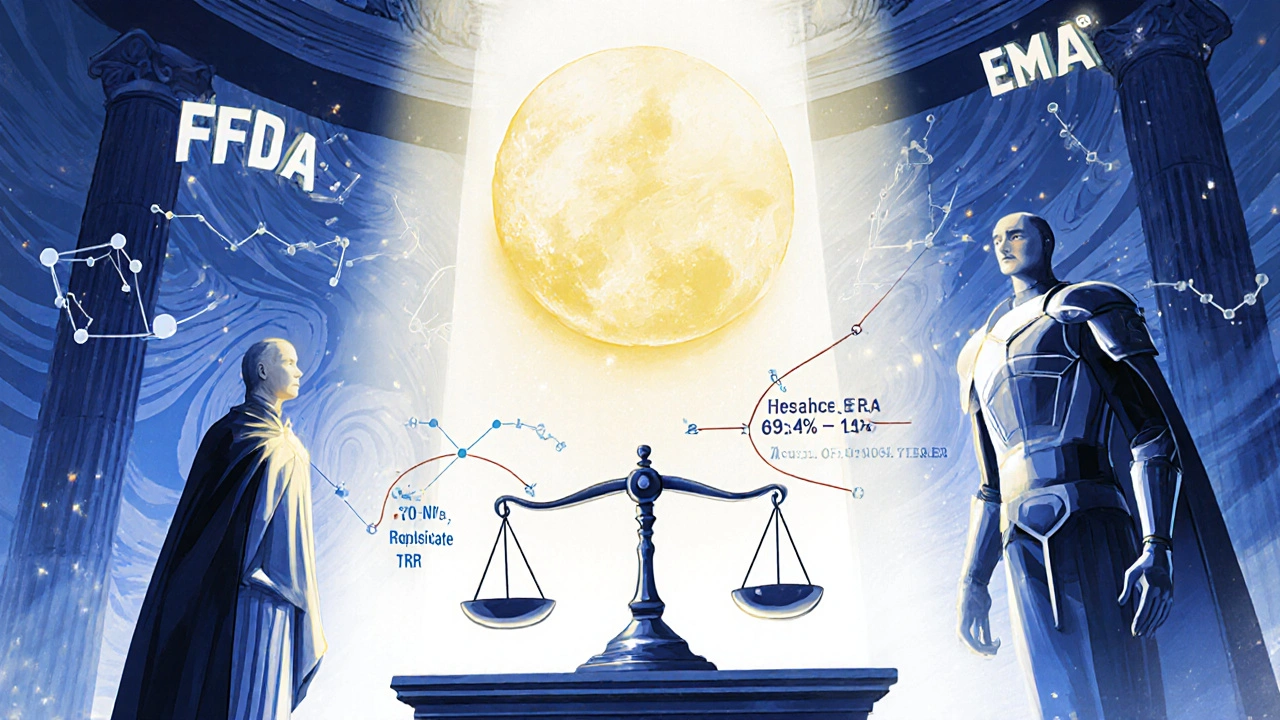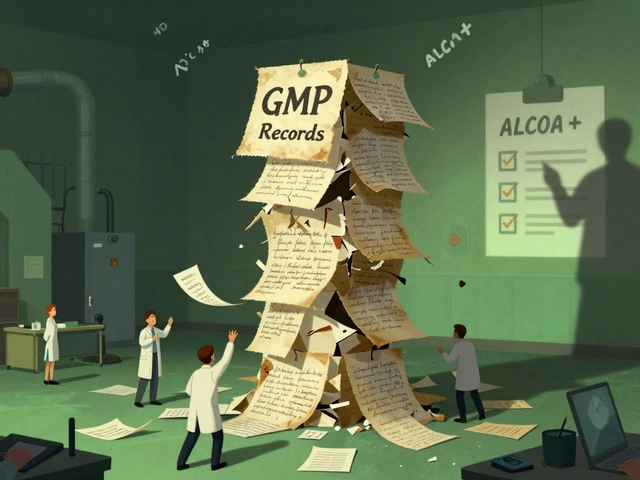
When a drug is highly variable-meaning its effects differ significantly from one person to the next, even at the same dose-standard bioequivalence (BE) studies often fail. You might test 100 people, get clean data, and still not pass regulatory approval. Why? Because the usual two-period, two-sequence crossover (TR/RT) can’t handle the noise. That’s where replicate study designs come in. They’re not just an upgrade; they’re often the only way to prove a generic version of a highly variable drug is safe and effective.
Why Standard Designs Fall Short for Highly Variable Drugs
Picture this: you’re testing a generic version of warfarin, a blood thinner with a narrow therapeutic window. The reference product has an intra-subject coefficient of variation (ISCV) of 45%. In a standard 2x2 crossover, you’d need 90+ subjects just to have a 50% chance of passing bioequivalence. That’s expensive, slow, and ethically questionable-putting so many people through multiple dosing periods for a drug that already carries risk. The problem isn’t the drug. It’s the method. Standard designs treat all variability as if it’s the same across test and reference products. But with highly variable drugs (HVDs), the real issue is that the reference product itself fluctuates wildly between doses in the same person. If you don’t measure that, you can’t adjust your acceptance limits. And that’s exactly what replicate designs do.What Are Replicate Study Designs?
Replicate designs are multi-period studies where subjects receive the test and reference products more than once. This lets you separate within-subject variability for the test product (CVwT) from that of the reference product (CVwR). The goal? To use reference-scaling-specifically, reference-scaled average bioequivalence (RSABE)-to widen the bioequivalence limits based on how variable the reference drug is. There are three main types:- Full replicate (four-period): TRRT or RTRT. Each subject gets both products twice. Lets you estimate CVwT and CVwR. Required for narrow therapeutic index (NTI) drugs like warfarin or levothyroxine.
- Full replicate (three-period): TRT or RTR. Each subject gets the test once and the reference twice (or vice versa). Allows estimation of CVwR only, but still sufficient for most HVDs.
- Partial replicate (three-period): TRR, RTR, RRT. Only the reference is repeated across sequences. FDA accepts this for RSABE, but EMA prefers full replicate for HVDs.
When Do You Need a Replicate Design?
Regulators don’t make you use replicate designs unless you have to. The trigger is clear: if the reference product’s ISCV is greater than 30%, you’re in HVD territory. But it’s not just a number-it’s about power. Here’s what the numbers look like:| ISCV | Formulation Difference | Standard 2x2 Subjects Needed | Replicate Design Subjects Needed |
|---|---|---|---|
| 30% | 5% | 38 | 24 |
| 40% | 8% | 72 | 36 |
| 50% | 10% | 108 | 28 |
Regulatory Differences: FDA vs. EMA
The FDA and EMA both accept RSABE-but their rules diverge in practice. The FDA allows partial replicate designs (TRR/RTR/RRT) for most HVDs. Their guidance says you need at least 24 subjects, with at least 12 completing the RTR arm. They’re pragmatic: if you can estimate CVwR, you can scale. The EMA, however, requires full replicate designs (TRT/RTR) for HVDs. They want CVwT and CVwR both measured. Why? Because they’re more cautious about potential differences between test and reference. Their 2010 guideline still holds, and they’ve rejected submissions using partial replicates-even when the data looked good. And then there’s NTI drugs. Both agencies agree: for drugs like levothyroxine or phenytoin, you need a four-period full replicate (TRRT/RTRT). Why? Because small differences in exposure can mean big clinical consequences. The FDA’s 2023 guidance on warfarin sodium makes this mandatory.
Statistical Analysis: It’s Not Just Software
You can’t run a replicate study and use a t-test. The math is different. You need mixed-effects models, and you need to apply reference-scaling formulas correctly. The industry standard is the R package replicateBE (version 0.12.1). It’s open-source, well-documented, and used by 83% of CROs in a 2023 survey. But knowing how to use it isn’t enough. You need to understand:- How to handle missing data without biasing results
- Why you can’t use average bioequivalence (ABE) for ISCV > 30%
- How to interpret the scaled limits (e.g., 69.84%-143.19% instead of 80%-125%)
- When Bayesian methods are acceptable (FDA approved them in May 2023 for specific cases)
Operational Challenges: More Than Just More Periods
Replicate designs aren’t just statistically complex-they’re logistically heavy.- Longer duration: If the drug has a 24-hour half-life, you need at least 7-10 days between doses. Four-period studies can stretch to 6-8 weeks.
- Dropout rates: Average 15-25%. You must over-recruit by 20-30%. One team in Sydney recruited 52 subjects for a 40-subject target. They ended up with 38 completers. Cost overrun? $187,000.
- Washout periods: Too short? Carryover effects ruin data. Too long? Subjects drop out or lose compliance.
- Sequence imbalance: If one sequence has more dropouts, it skews the analysis. Proper randomization is non-negotiable.
Industry Trends and Future Outlook
Replicate designs are no longer optional-they’re the norm for HVDs. - The global BE study market hit $2.8 billion in 2023. Replicate designs now make up 35% of HVD assessments, up from 18% in 2019. - FDA rejection rates for non-replicate HVD submissions hit 41% in 2023. For properly designed replicate studies? Just 12%. - EMA approved 78% of HVD generics using replicate designs in 2023, with 63% using the three-period full replicate (TRT/RTR). - WuXi AppTec, PPD, and Charles River now lead the market, but niche CROs like BioPharma Services are gaining ground by specializing in statistical rigor. The next wave? Adaptive designs. The FDA’s 2022 draft guidance allows starting with a replicate design but switching to standard analysis if variability turns out to be lower than expected. It’s a smart way to save time and money-if done right. Machine learning is also entering the picture. Pfizer’s 2023 proof-of-concept used historical BE data to predict optimal sample sizes with 89% accuracy. This isn’t science fiction-it’s the next step.Getting Started: A Practical Roadmap
If you’re planning your first replicate study, here’s how to avoid common pitfalls:- Check the ISCV: Use historical data from the reference product’s label or published studies. If it’s below 30%, stick with 2x2.
- Choose your design: For 30-50% ISCV, use three-period full replicate (TRT/RTR). For over 50%, go with four-period full replicate. For NTI drugs, always use four-period.
- Recruit early: Over-enroll by 25%. Track dropouts daily.
- Validate your software: Use replicateBE or Phoenix WinNonlin. Don’t try to code it yourself unless you’re a biostatistician.
- Consult regulators early: Submit a pre-submission meeting request to the FDA or EMA. Ask: ‘Is this design acceptable?’
What Happens If You Get It Wrong?
A failed BE study isn’t just a delay-it’s a financial hit. One Australian generic manufacturer spent $2.1 million on a four-period study, only to be rejected because they used the wrong statistical model. The product was delayed by 18 months. The company lost market share to a competitor who got their replicate design right on the first try. The message is clear: replicate designs aren’t harder because they’re complicated. They’re harder because they demand precision. Every step-from subject selection to statistical analysis-must be flawless.Final Thought
Replicate study designs are the backbone of modern bioequivalence assessment for highly variable drugs. They’re not a shortcut. They’re a necessary evolution. Without them, many life-saving generics would never be approved. But with them, you can prove equivalence without asking 100 people to take a drug six times. The future belongs to those who master the complexity-not those who avoid it.What is the minimum number of subjects needed for a three-period replicate BE study?
For a three-period full replicate design (TRT/RTR), regulatory agencies require at least 24 total subjects, with at least 12 subjects completing the RTR sequence. This ensures sufficient data to estimate within-subject variability for the reference product. The FDA and EMA both enforce this minimum to maintain statistical power.
Can I use a partial replicate design for a narrow therapeutic index (NTI) drug?
No. For NTI drugs like warfarin, levothyroxine, or phenytoin, both the FDA and EMA require a four-period full replicate design (TRRT/RTRT). These drugs have a very small margin between effective and toxic doses, so you must measure variability for both the test and reference products. Partial replicates don’t provide enough data to ensure safety.
Why do some BE studies fail even with replicate designs?
Failures usually come from three sources: inadequate washout periods leading to carryover effects, poor subject retention (dropout rates above 25%), or using the wrong statistical model. Many teams use average bioequivalence (ABE) instead of reference-scaled average bioequivalence (RSABE) for HVDs, which is statistically invalid. Others misinterpret scaled limits or fail to over-recruit for expected dropouts.
Is the FDA’s approach to replicate designs more flexible than the EMA’s?
Yes. The FDA accepts both partial and full replicate designs for most HVDs, prioritizing efficiency. The EMA requires full replicate designs for all HVDs with ISCV > 30%, demanding more data and stricter controls. This difference causes confusion for global submissions-studies approved by the FDA may be rejected by the EMA if they use a partial design.
What software is recommended for analyzing replicate BE studies?
The industry standard is the R package replicateBE (version 0.12.1), which is open-source and validated by regulatory agencies. Phoenix WinNonlin is also widely used, especially in larger CROs. Both support RSABE calculations, mixed-effects modeling, and reference-scaling. Avoid generic statistical tools like SPSS or Excel-they lack the necessary algorithms for replicate designs.
How long does it take to train a pharmacokinetic analyst to handle replicate BE studies?
It typically takes 80-120 hours of focused training to become proficient. This includes learning mixed-effects modeling, reference-scaling formulas, regulatory guidelines (FDA/EMA), and hands-on use of software like replicateBE. Many CROs now require certification in BE analysis before allowing analysts to lead replicate studies.
Are adaptive designs the future of BE studies?
Yes. Adaptive designs let you start with a replicate protocol but switch to a simpler design if early data shows low variability. The FDA’s 2022 draft guidance supports this approach to reduce unnecessary complexity. Early pilot data can be used to adjust sample size or even change the statistical method-saving time and cost. However, this requires pre-specified rules and regulatory pre-approval.






13 Comments
This is such a game-changer for generic drug development! I’ve seen so many brilliant formulations die because of outdated study designs-replicates are the only way forward. Seriously, if you’re still doing 2x2 for HVDs, you’re just wasting everyone’s time and money.
/p>Oh my gosh, YES!! I just want to hug whoever wrote this-finally, someone explained this in a way that doesn’t make me want to cry! I’ve been in this field for 12 years, and I’ve seen so many teams struggle with the same issues: underpowered studies, wrong models, dropout nightmares… And now? We’ve got the tools to fix it! Just remember: over-recruit, validate your software, and don’t skip the pre-submission meeting with the FDA. Trust me, your future self will thank you!!
/p>Wow, another ‘revolutionary’ method that only works if you have a $5M budget and a team of 12 biostatisticians. Meanwhile, in the real world, most generics are still made by people who can’t even spell ‘bioequivalence’ correctly. This is just pharma’s way of charging more for the same pill.
/p>You mention replicateBE version 0.12.1 as if it’s gospel. Did you even check the GitHub issues? There’s a known bug in the CI calculation for RTR designs under non-normal residuals. And you didn’t even touch on the fact that the FDA’s 2023 guidance on warfarin contradicts their own 2021 Q&A on carryover effects. This is amateur hour.
/p>Why are we letting Europe dictate our standards? The EMA wants full replicates? Fine. But if you’re doing business in the U.S., use the FDA’s rules. Stop outsourcing your science to Brussels. This isn’t about science-it’s about sovereignty. We’ve got the tech, the data, the brains. Stop bowing to foreign regulators.
/p>Interesting perspective but I must question the underlying assumption that statistical complexity equals clinical relevance. In India, we often use simpler models with larger sample sizes because our populations are more heterogeneous. Is this Western-centric methodology truly generalizable? Or are we just exporting a costly paradigm that doesn't fit global realities?
/p>RSABE is the only valid approach for CVwR > 30%. Partial replicate is acceptable under FDA guidance but only if the design is properly randomized and the model accounts for period effects. Must use mixed-effects with unstructured covariance. Don’t use ANOVA. Ever.
/p>Wow, another white paper pretending this is ‘science.’ Meanwhile, the real problem is that Big Pharma owns the reference products and rigs the ISCV numbers. Replicate designs? More like a money laundering scheme disguised as regulatory science. Wake up people-this isn’t about safety, it’s about profit.
/p>As someone who’s worked in both U.S. and Southeast Asian bioequivalence labs, I can say this: replicate designs are the only ethical way forward. We used to run 100-person studies in rural Thailand where people skipped work for weeks just to participate. Now? We do 30-person TRT studies. Fewer people suffer, better data, faster access to meds. This isn’t just statistics-it’s justice.
/p>Y’all act like this is some new breakthrough. We’ve been doing this since 2010. The only reason it’s trending now is because the FDA finally stopped being lazy. Also, you forgot to mention that 70% of CROs still use Excel for data cleaning. No wonder studies fail.
/p>So let me get this straight-we’re spending 6 months and $2M to prove a pill is ‘similar’ to another pill that’s been on the market for 30 years? And we’re calling this ‘science’? What if we just… let people take the generic and see if they die? You know, like they did in the 80s? Maybe we don’t need all this math. Maybe we just need less bureaucracy.
/p>Everyone’s acting like this is deep insight. It’s not. It’s just regulatory theater. The real issue? Nobody wants to admit that for HVDs, bioequivalence is mostly a guess. We just wrap it in fancy math so regulators feel better. The truth? We’re still flying blind. But hey, at least we have a 120-hour certification now.
/p>Just saw a study from a CRO in Ohio where they used a 2x2 design on a 48% ISCV drug. Got approved by the FDA. No one caught it. This whole system is a joke. You don’t need replicate designs-you need a new regulatory agency. Or maybe just honesty.
/p>